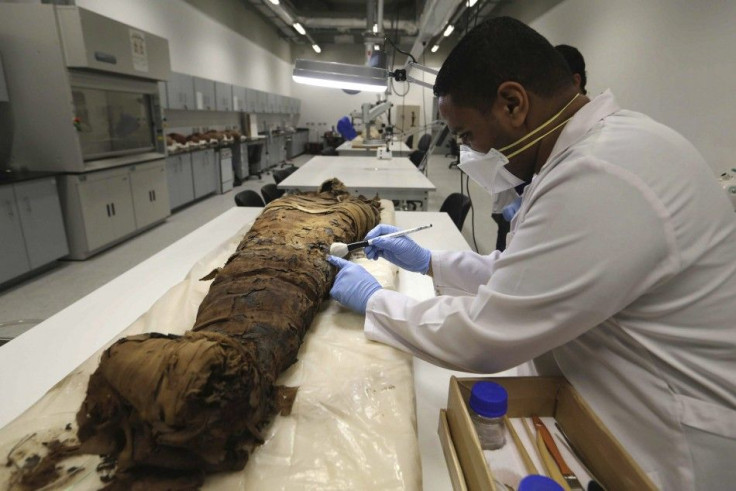Ancient Egyptian Cemetery With Over One Million Mummies Unearthed

Archaeologists have unearthed more than a million mummified bodies in an ancient cemetery in Egypt including ones of children. A lot of mummies, almost 1,700, were excavated by the scientists in the Faiyum region of Egypt.
According to the Daily Mail, the mummies were buried between the 1st and 7th century AD, almost 1,500 years ago. This was the period when the Roman and Byzantine Empire had controlled Egypt. The mummies were found in mass graves and were said to belong to ordinary citizens and not of royalty. They, unlike the royal Egyptian mummies, were also buried along with few objects and also laid without coffins. Also, the internal organs were also rarely removed. Removal of the internal organs was an important part of the mummification process.
Scientists were surprised by the amount of mummies that were found. They said that the remains of a village nearby was small to have such a large cemetery. Also, the nearest town, which is called Philadelphia, had its own burial sites.
The project director of the excavation from Brigham Young University in Utah, Professor Kerry Muhlestein, said that they were certain that they had over a million burials within the cemetery. He added that the cemetery was large and dense. Last month, he presented the latest discoveries on the eastern edge of the Faiyum region at the Scholar's Colloquium at the Society for the Study of Egyptian Antiquities.
The archaeologists came across a range of mummies, one of which was a man who was more than 213 centimeters tall. It was also discovered that the mummies were buried together by the colour of their hair. One area had people with blond hair while the other had people with red hair.
Almost 30 years ago, the Fag el-Gamous necropolis, which translates as "Way of the Buffalo," was discovered. The archaeologists were trying to put together what has been found. Looking at the recent discoveries made last year, mummified remains of a little girl aged around 18 months old, still with two bracelets on each arm, was found. Professor Muhlestein, talking about the discovery of the little girl, said that it appeared to have been an attempt to use the full mummification process.




















